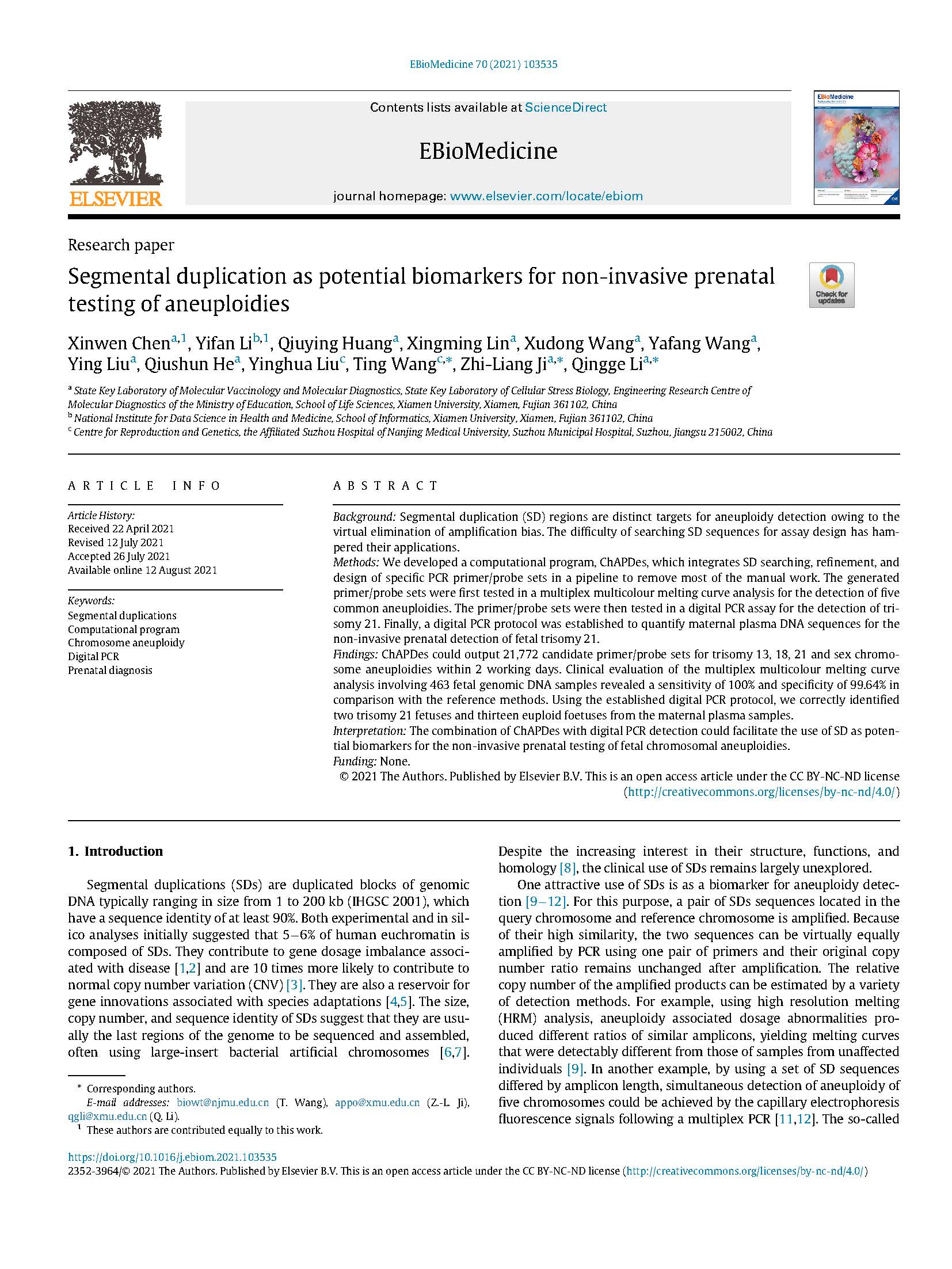Segmental duplication as potential biomarkers for non-invasive prenatal testing of aneuploidies
release date:2021-08-12

Background: Segmental duplication (SD) regions are distinct targets for aneuploidy detection owing to the virtual elimination of amplification bias. The difficulty of searching SD sequences for assay design has ham-pered their applications.
Methods: We developed a computational program, ChAPDes, which integrates SD searching, refinement, and design of specific PCR primer/probe sets in a pipeline to remove most of the manual work. The generated primer/probe sets were first tested in a multiplex multicolour melting curve analysis for the detection of five common aneuploidies. The primer/probe sets were then tested in a digital PCR assay for the detection of tri-somy 21. Finally, a digital PCR protocol was established to quantify maternal plasma DNA sequences for the non-invasive prenatal detection of fetal trisomy 21.
Findings: ChAPDes could output 21,772 candidate primer/probe sets for trisomy 13, 18, 21 and sex chromo-some aneuploidies within 2 working days. Clinical evaluation of the multiplex multicolour melting curve analysis involving 463 fetal genomic DNA samples revealed a sensitivity of 100% and specificity of 99.64% in comparison with the reference methods. Using the established digital PCR protocol, we correctly identified two trisomy 21 fetuses and thirteen euploid foetuses from the maternal plasma samples.
Interpretation: The combination of ChAPDes with digital PCR detection could facilitate the use of SD as poten-tial biomarkers for the non-invasive prenatal testing of fetal chromosomal aneuploidies.
Funding: None.
See all: https://doi.org/10.1016/j.ebiom.2021.103535
 Background: Segmental duplication (SD) regions are distinct targets for aneuploidy detection owing to the virtual elimination of amplification bias. The difficulty of searching SD sequences for assay design has ham-pered their applications.
Background: Segmental duplication (SD) regions are distinct targets for aneuploidy detection owing to the virtual elimination of amplification bias. The difficulty of searching SD sequences for assay design has ham-pered their applications.